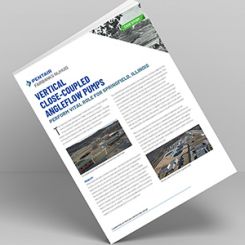Positive displacement (PD) pumps do not function well if the discharge is blocked. Unlike centrifugal pumps, they have little tolerance for flow restriction. A piston pump will try to continue stroking regardless of whether its discharge valve is open or closed. This means that something will have to give—a tripped motor, ruptured casing or worse. Centrifugal pumps also do not operate well with a valve, but they can at least tolerate a brief closure. In fact, some require a closed valve pressure reading during performance tests at the factory. This difference is the result of the design of both pumps. No internal motion occurs to displace the fluid inside a centrifugal pump. The impeller simply keeps spinning the fluid if the valve is closed. In a PD pump—such as a piston pump—the displacing motion acts on the fluid, and the fluid must exit the pump. For these reasons, a PD pump needs to have a relief valve (either internal or external), which could be set to open when a certain pressure is reached. This is necessary to protect the pump. Unfortunately, because of pressure pulsations inside a PD pump, knowing at which pressure to set the release valve to open is difficult. Should it be average, maximum or minimum pressure? An example of such a dilemma—raised during a recent conversation with a colleague in the industry regarding release valve pressure settings—is shown in the next section.
09/29/2012

